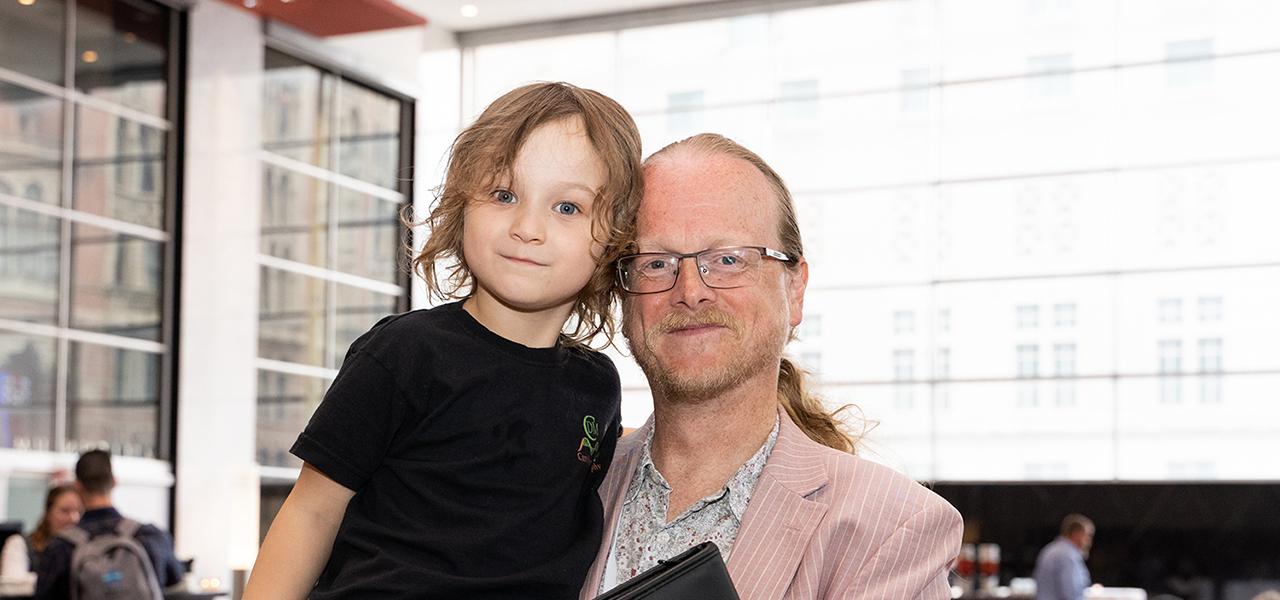To date, technological hurdles have been a barrier to creating a mouse model for type 2 myotonic dystrophy (DM2), hindering understanding and treatment development for this disorder. But that’s about to change, thanks in part to the work of Łukasz Sznajder, Ph.D., a recipient of a 2016-2017 research fellowship grant from MDF.
"Currently, there are only cellular and fruit fly models available," says Dr. Sznajder, "and they’re not sufficient to understand the complex nature of DM2. A mouse model is urgently necessary to break this barrier."
Without mouse models it would have been impossible to develop the drugs now being tested to treat most neuromuscular disorders, including type 1 myotonic dystrophy (DM1).
A DM2 mouse model “will provide an excellent platform to evaluate DM2 phenotypes,” Dr. Sznajder says.
It would also allow researchers to study tissues that are hard to obtain from patients, such as those from the cardiac muscle and brain, and it would shed light on the differences between DM1 and DM2.
"My proposed model represents a unique opportunity to distinguish the differences between DM1 and DM2," Sznajder says. "We expect to answer puzzling questions, such as why there is no congenital-onset form of DM2," which is caused by several thousand CCTG repeats in the first intron of the CNBP gene.
"It is worth mentioning that the size of this mutation is several times that of the expansion that leads to DM1," Sznajder says. That, he notes, poses some challenges in developing a DM2 mouse model. "First, the amplification of even a few hundred repeats is not possible using conventional strategies. Second, the precise insertion of these repeats into the mouse CNBP gene is a highly inefficient process," he says.
"New technologies have remarkably improved the efficiency of genome engineering, and we hope to use these technologies to overcome the current challenges in DM2 modeling," he says.
Moving Toward DM2 Therapies
A mouse model will also allow Dr. Sznajder and his team to test therapeutic strategies for DM2 like antisense oligonucleotides and small molecules.
The antisense oligonucleotide-based drug IONIS-DMPKRx, designed to block harmful interactions between expanded RNA repeats and cellular proteins in DM1, is now in a phase 1-2 trial. Dr. Sznajder and his colleagues hope to develop a similar molecule to treat DM2.
"It is scientifically possible to adjust the oligonucleotide sequence to make it useful for DM2," Sznajder says. "However, a good mouse model of the disease is needed to test the efficiency of this or other approaches." His new DM2 mouse is expected to provide this vital tool.
A Passion for DM Research
Dr. Sznajder recently moved from his native Poland to realize his dream of working with a renowned DM researcher in the United States.
Coming of age in Poland in the 2000s, Sznajder decided to become a biomedical scientist, ultimately earning his doctorate in biotechnology and molecular biology from the Adam Mickiewicz University in Poznań in December 2015.
"For some time," he says, "I had dreamed about working at a prestigious university in the United States under the supervision of someone who would enable me to develop my scientific career while following my passion for research in myotonic dystrophy."
During his graduate studies, Sznajder was fortunate enough to work under Dr. Krzysztof Sobczak, who had been a postdoc in the laboratory of Dr. Charles Thornton, a DM researcher at the University of Rochester in New York state and a colleague of Dr. Maurice Swanson.
Under the mentorship of Dr. Sobczak, Sznajder started working on RNA toxicity and MBNL proteins, which he describes as "critical players in the molecular cascade of DM."
Dr. Sznajder is continuing his vital DM research under Dr. Maurice Swanson at the University of Florida.

